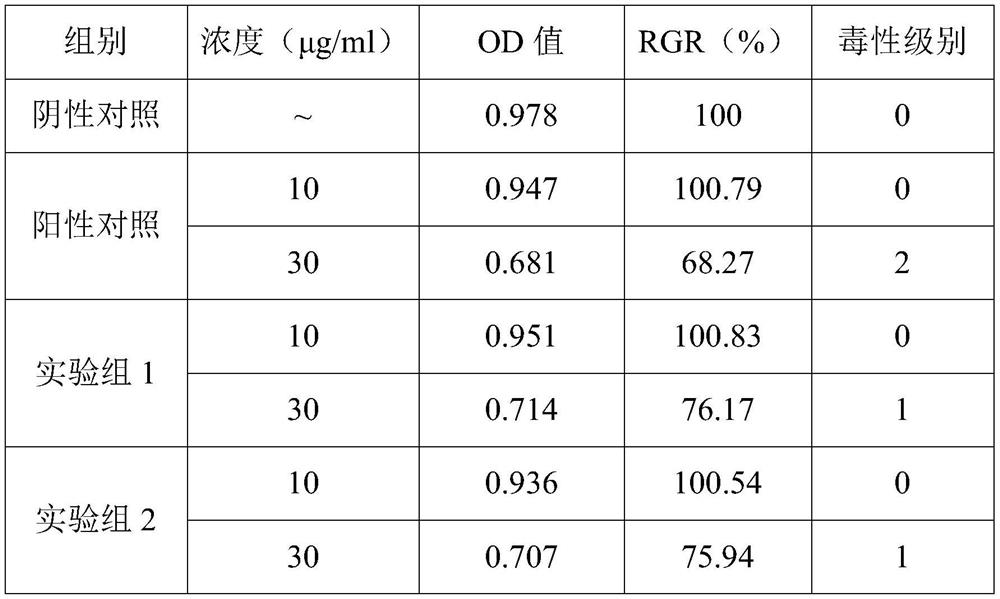Biological material, preparation method and application thereof
A biomaterial and cross-linking reaction technology, applied in the field of biomedical materials, can solve the problems of bio-heart valves such as easy degradation, achieve endothelialized barrier, improve structural stability and mechanical strength, and prolong the use time
- Summary
- Abstract
- Description
- Claims
- Application Information
AI Technical Summary
Problems solved by technology
Method used
Image
Examples
preparation example Construction
[0039] The preparation method of the amnion basement membrane double-layer cross-linking unit is as follows: soak the amnion basement membrane in an aqueous solution containing small molecular substances of amino groups; then place the soaked amnion basement membrane The crosslinking reaction occurs in the aqueous solution of imide.
[0040]It should be noted that the soaked decellularized amniotic membrane or amnion basement membrane is placed in an aqueous solution containing carbodiimide and N-hydroxysuccinimide, and carbodiimide activates the carboxyl groups of the decellularized amnion or amnion basement membrane , and N-hydroxysuccinimide makes the activated carboxyl group and amino group undergo stable cross-linking, and dehydration condensation forms peptide bonds, thereby realizing the stable cross-linking of other extracellular matrices except collagen, including elastin. couplet.
[0041] Specifically, the decellularized amnion or amniotic basement membrane is plac...
Embodiment 1
[0067] The embodiment of the present application provides a method for preparing a biological material, comprising the following steps:
[0068] S1. Acquisition of amnion: Obtain the amnion in a sterile environment, soak it in saline containing penicillin, streptomycin and penicillin for 30 minutes, wash it several times to remove the blood, and then bluntly separate the amnion from the chorion of the placenta , spread its upper surface on a sterilized cellulose acetate membrane, and set aside;
[0069] S2. Acquisition of amniotic basement membrane: the amniotic membrane is separated from the fibroblast layer, spongy layer, epithelial cell layer and compact layer, then dehydrated and decellularized, and washed with saline containing penicillin and streptomycin to obtain the amniotic basement membrane ;
[0070] S3. Acquisition of amniotic basement membrane fluid: after the amniotic basement membrane is crushed, trypsin and nuclease are added for enzymatic hydrolysis, and then...
Embodiment 2
[0077] The embodiment of the present application provides a method for preparing a biological material, comprising the following steps:
[0078] S1. Acquisition of amnion: Obtain the amnion in a sterile environment, soak it in saline containing penicillin, streptomycin and penicillin for 30 minutes, wash it several times to remove the blood, and then bluntly separate the amnion from the chorion of the placenta , spread its upper surface on a sterilized cellulose acetate membrane, and set aside;
[0079] S2. Acquisition of amniotic basement membrane: the amniotic membrane is separated from the fibroblast layer, spongy layer, epithelial cell layer and compact layer, then dehydrated and decellularized, and washed with saline containing penicillin and streptomycin to obtain the amniotic basement membrane ;
[0080] S3. Soak the amniotic basement membrane in an aqueous solution of lysine with a mass concentration of 4% for 24 hours, then place the amniotic basement membrane in wat...
PUM
| Property | Measurement | Unit |
|---|---|---|
| diameter | aaaaa | aaaaa |
Abstract
Description
Claims
Application Information
 Login to View More
Login to View More - R&D
- Intellectual Property
- Life Sciences
- Materials
- Tech Scout
- Unparalleled Data Quality
- Higher Quality Content
- 60% Fewer Hallucinations
Browse by: Latest US Patents, China's latest patents, Technical Efficacy Thesaurus, Application Domain, Technology Topic, Popular Technical Reports.
© 2025 PatSnap. All rights reserved.Legal|Privacy policy|Modern Slavery Act Transparency Statement|Sitemap|About US| Contact US: help@patsnap.com



